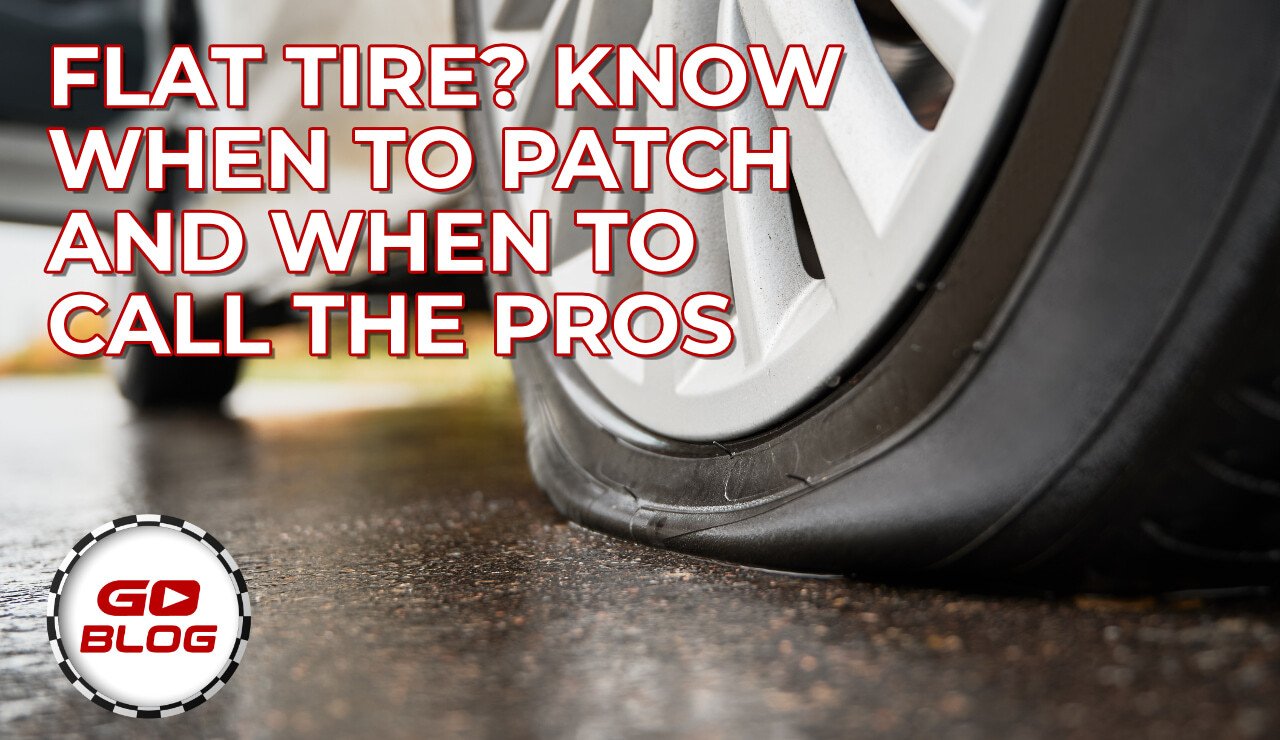Patch or Professional? Navigating Tire Repair Options
Posted by WheelSetGo on 6th Jan 2025

Patch or Professional? Navigating Tire Repair Options
A flat tire can quickly ruin your day, whether you're heading to work or on a long road trip. When faced with a damaged tire, you’re often left with a decision: should you patch it up yourself or take it to a professional? While DIY tire repair can save time and money, there are risks involved. On the other hand, professional service offers peace of mind but comes at a higher cost.
In this post, we’ll compare the benefits, risks, and safety considerations of DIY tire repair versus professional service, helping you decide which option is right for you.
DIY Tire Repair: Convenience and Cost-Effectiveness
DIY tire repair appeals to many drivers because of its simplicity, affordability, and convenience. With a basic repair kit or sealant, you can quickly patch up a small puncture and get back on the road. But while DIY can seem like an easy fix, there are important limitations to keep in mind.
Benefits of DIY Tire Repair
- Cost savings: A basic tire repair kit costs between $10 and $30, making it a budget-friendly option.
- Immediate solution: DIY repair kits allow you to address the issue right away, which is especially valuable if you’re stuck in a remote location.
- Learning opportunity: Performing a DIY repair can build your confidence in handling minor car issues.
Common DIY Methods
- Tire sealants: These aerosol or liquid solutions are injected into the tire to temporarily seal punctures from the inside.
- Plug kits: These kits include a plug and insertion tool that can fill small punctures in the tread.
- Temporary patches: Some kits offer adhesive patches that can be applied externally.
Risks and Limitations
- Temporary nature: Most DIY repairs are temporary fixes. They may not hold up over time, especially under high-speed or heavy-load conditions.
- Hidden damage: Without proper inspection, internal damage may go unnoticed, which can lead to tire failure.
- Safety concerns: An improperly repaired tire can fail unexpectedly, posing a serious risk to you and other drivers.
Professional Tire Repair: Expertise and Long-Term Safety
While it might cost more, taking your tire to a professional service ensures that the repair is done correctly and safely. Tire shops have the tools, experience, and materials to provide a lasting solution, making this option the safest in the long run.
Benefits of Professional Service
- Thorough inspection: Professionals can identify hidden issues, such as internal sidewall damage, that might not be visible to the untrained eye.
- Proper tools and materials: Professional shops use high-quality patches, plugs, and vulcanization techniques to ensure the repair holds permanently.
- Guaranteed workmanship: Many tire shops offer warranties on their repairs, giving you peace of mind.
Common Professional Methods
- Patch and plug combination: This is the industry-standard method, combining an internal patch with a plug to create a long-lasting, airtight seal.
- Vulcanization: A more advanced technique used for larger punctures or specialty tires, where the rubber is bonded through heat and pressure.
Risks and Drawbacks
- Higher cost: Professional repairs typically cost between $20 and $60.
- Time commitment: You may need to wait for an appointment or spend time at the shop.
Key Safety Considerations
1. Speed Ratings and Load Limits
Even a professionally repaired tire may not maintain its original speed rating or load capacity, depending on the location and severity of the damage. Always check with your tire technician.
2. When NOT to Repair a Tire
- Punctures larger than ¼ inch (6 mm) in diameter
- Damage to the sidewall or shoulder of the tire
- Tires worn down to less than 2/32 inch of tread depth
The location of the puncture is critical in determining whether a tire can be safely repaired. As shown in the graphic below, punctures in the tread area (green) are generally repairable, while damage to the sidewall or shoulder (red) cannot be repaired safely:

Only punctures in the central tread area (marked green) can be repaired reliably. Damage near the shoulder or sidewall (marked red) weakens the tire’s structural integrity and may lead to dangerous blowouts if not replaced.
3. Long-Term Consequences of Poor Repairs
- Blowouts: A sudden loss of tire pressure at high speeds, which can be dangerous.
- Uneven wear: Poor repairs can cause the tire to wear unevenly, reducing its lifespan.
- Reduced fuel efficiency: A damaged or poorly repaired tire may increase rolling resistance, leading to lower fuel economy.
Comparing the Costs: DIY vs. Professional Repair
| Aspect | DIY Repair | Professional Repair |
|---|---|---|
| Cost | $10–$30 | $20–$60 |
| Time required | 10–30 minutes | 30 minutes to 1 hour |
| Risk level | Moderate to high | Low |
| Repair lifespan | Short-term | Long-term |
| Safety guarantee | No | Yes, often with warranty |
Final Verdict: When to DIY and When to Go Pro
When to DIY
- For small punctures in the tread area.
- As a temporary solution to get you to a tire shop.
- When you’re confident in using a repair kit and understand the risks.
When to Go Pro
- For large punctures or damage near the sidewall.
- When you want a reliable, long-term repair.
- If your tire is high-performance or specialty (e.g., low-profile or off-road tires).
Conclusion
When it comes to tire repair, choosing the right option can save you money, time, and potentially prevent dangerous situations. While DIY tire repair can be a quick, cost-effective solution in certain situations, professional service ensures that the job is done right the first time, offering long-term safety and peace of mind.
If you’re looking for high-quality tires or aftermarket wheels, or need a mounted and balanced wheel and tire package, we’ve got you covered. Explore our selection today, and drive with confidence! Call us at 320-247-6160 for more information.
